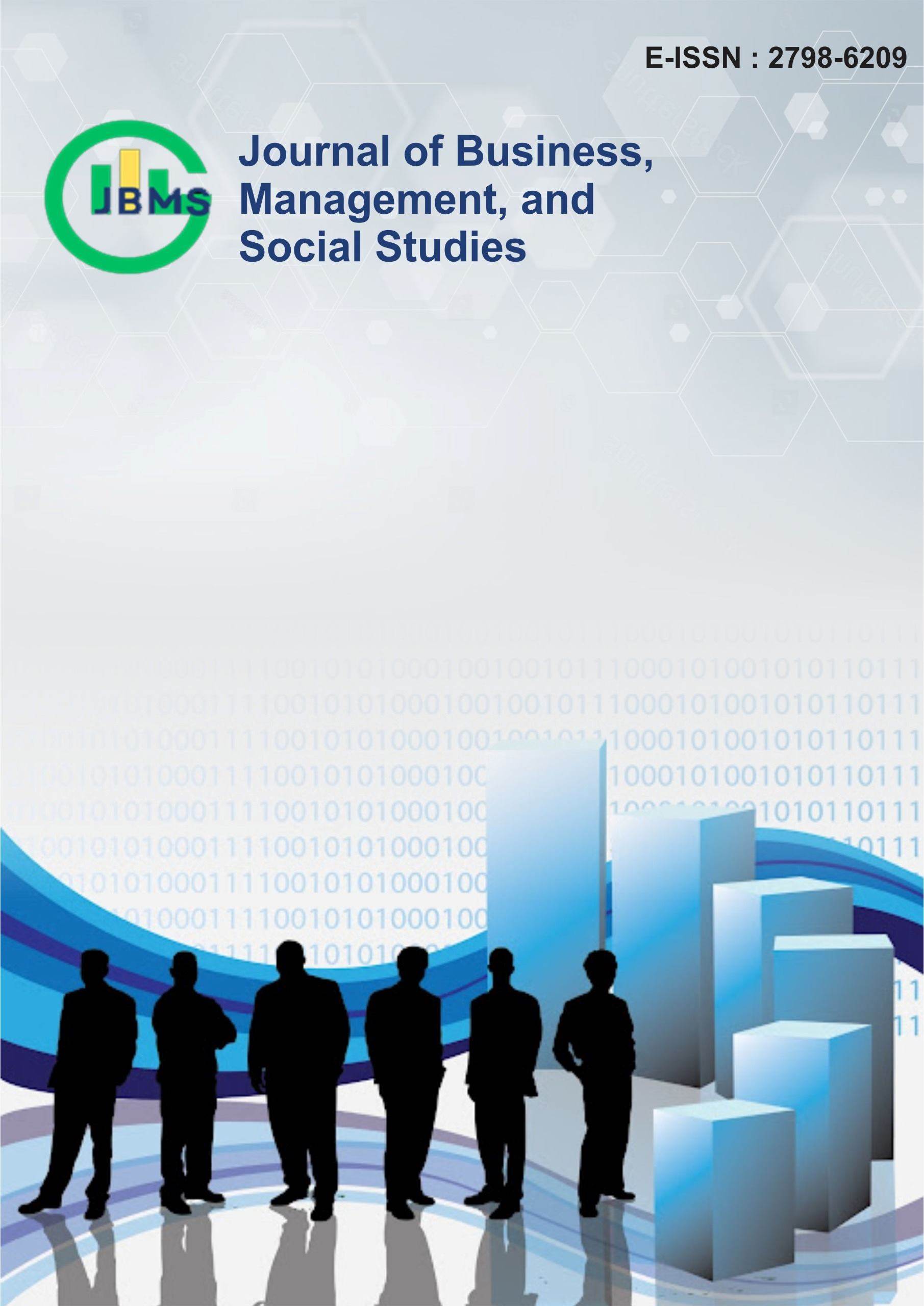Consumer Conformity and Continuance Intention: A Study Case Approach of Facebook and WhatsApp
DOI:
https://doi.org/10.53748/jbms.v5i1.118Keywords:
Consumer Conformity, Reuse Intention, Continuance Intention, WhatsApp Policy, Technology Acceptance Model,Abstract
ABSTRACT
Purpose - This study aims to explore the phenomenon of consumer conformity and its impact on the continuance and reuse intention of digital communication platforms, particularly in the context of policy changes that force users into making critical decisions. Using the recent case of WhatsApp and Facebook's policy updates as a backdrop, this study examines how consumer conformity influences user behavior and intentions to continue or abandon a service.
Methodology - The research is conceptual in nature, employing an integrative approach based on the Theory of Planned Behavior (TPB) and the Technology Acceptance Model (TAM). A comparative analysis is conducted through two proposed scenarios to understand user decisions following sudden policy changes, emphasizing the psychological factors of conformity, perceived value, trust, and perceived risk.
Findings - The findings suggest that when consumers are faced with limited choices, such as accepting unfavorable terms or discontinuing service, informational and normative conformity significantly influence continuance intention. Factors such as perceived security, service quality, satisfaction, and perceived usefulness are found to moderate the relationship between conformity and continuance intention. Additionally, previous experience, trust, and self-efficacy emerge as strong determinants of users' willingness to reuse or abandon the service after policy disruptions.
Novelty - Unlike previous studies that treat continuance intention purely as a result of satisfaction and usefulness, this study introduces the element of forced conformity and policy-driven decision-making into the behavioral model. It proposes a dynamic framework that incorporates psychological contract violation, trust restoration strategies, and conformity types (informational and normative) in explaining consumer behavior in digital platforms.
Downloads
References
Alalwan, A. A. (2020). Mobile food ordering apps: An empirical study of the factors affecting customer e-satisfaction and continued intention to reuse. International Journal of Information Management, 50(May 2019), 28–44. https://doi.org/10.1016/j.ijinfomgt.2019.04.008
Ashfaq, M., Yun, J., Yu, S., & Loureiro, S. M. C. (2020). I, Chatbot: Modeling the determinants of users’ satisfaction and continuance intention of AI-powered service agents. Telematics and Informatics, 54(April). https://doi.org/10.1016/j.tele.2020.101473
Blose, J. E., Mack, R. W., & Pitts, R. E. (2015). The Influence of Message Framing on Hotel Guests’ Linen-Reuse Intentions. Cornell Hospitality Quarterly, 56(2), 145–154. https://doi.org/10.1177/1938965514556480
Bölen, M. C. (2020). Exploring the determinants of users’ continuance intention in smartwatches. Technology in Society, 60(March 2019). https://doi.org/10.1016/j.techsoc.2019.101209
Chakravarti, A. (2021). As people ditch WhatsApp, Signal faces rush and slowdowns. Retrieved from India Today website: https://www.indiatoday.in/technology/news/story/as-people-ditch-whatsapp-signal-faces-rush-and-slowdowns-1757783-2021-01-11?
Cho, J., & Lee, H. E. (2020). Post-adoption beliefs and continuance intention of smart device use among people with physical disabilities. Disability and Health Journal, 13(2). https://doi.org/10.1016/j.dhjo.2019.100878
Chuah, S. H. W. (2019). You inspire me and make my life better: Investigating a multiple sequential mediation model of smartwatch continuance intention. Telematics and Informatics, 43(July 2019). https://doi.org/10.1016/j.tele.2019.101245
Dai, H. M., Teo, T., & Rappa, N. A. (2020). Understanding continuance intention among MOOC participants: The role of habit and MOOC performance. Computers in Human Behavior, 112(March). https://doi.org/10.1016/j.chb.2020.106455
Ding, Y. (2019). Looking forward: The role of hope in information system continuance. Computers in Human Behavior, 91(August 2018), 127–137. https://doi.org/10.1016/j.chb.2018.09.002
Finnis, A. (2021). Is WhatsApp sharing data with Facebook ? Why privacy terms update doesn ’ t affect UK users , and what it means. Retrieved from News.co.uk website: https://inews.co.uk/news/technology/whatsapp-facebook-sharing-data-privacy-terms-update-policy-uk-users-explained-820838
Gupta, A., Yousaf, A., & Mishra, A. (2020). How pre-adoption expectancies shape post-adoption continuance intentions: An extended expectation-confirmation model. International Journal of Information Management, 52(January 2020). https://doi.org/10.1016/j.ijinfomgt.2020.102094
Hepola, J., Leppäniemi, M., & Karjaluoto, H. (2020). Is it all about consumer engagement? Explaining continuance intention for utilitarian and hedonic service consumption. Journal of Retailing and Consumer Services, 57(April). https://doi.org/10.1016/j.jretconser.2020.102232
Jiang, L., Zhang, J., Wang, H. H., Zhang, L., & He, K. (2018). The impact of psychological factors on farmers’ intentions to reuse agricultural biomass waste for carbon emission abatement. Journal of Cleaner Production, 189, 797–804. https://doi.org/10.1016/j.jclepro.2018.04.040
Khandelwal, U., Yadav, S. K., Tripathi, V., & Agrawal, V. (2018). E-consumer conformity and its impact on consumer attitude. Journal of Asia Business Studies, 12(4), 455–468. https://doi.org/10.1108/JABS-09-2015-0161
Kim, H. C., & Hyun, M. Y. (2016). Predicting the use of smartphone-based Augmented Reality (AR): Does telepresence really help? Computers in Human Behavior, 59, 28–38. https://doi.org/10.1016/j.chb.2016.01.001
Kim, K. H., Kim, K. J., Lee, D. H., & Kim, M. G. (2019). Identification of critical quality dimensions for continuance intention in mHealth services: Case study of onecare service. International Journal of Information Management, 46(December 2018), 187–197. https://doi.org/10.1016/j.ijinfomgt.2018.12.008
Li, C. Y., & Fang, Y. H. (2019). Predicting continuance intention toward mobile branded apps through satisfaction and attachment. Telematics and Informatics, 43(151). https://doi.org/10.1016/j.tele.2019.101248
Li, Y., Duan, Y., Fu, Z., & Alford, P. (2012). An empirical study on behavioural intention to reuse e-learning systems in rural China. British Journal of Educational Technology, 43(6), 933–948. https://doi.org/10.1111/j.1467-8535.2011.01261.x
Li, Y., & Shang, H. (2020). Service quality, perceived value, and citizens’ continuous-use intention regarding e-government: Empirical evidence from China. Information and Management, 57(3). https://doi.org/10.1016/j.im.2019.103197
Malhotra, N., Sahadev, S., & Purani, K. (2017). Psychological contract violation and customer intention to reuse online retailers: Exploring mediating and moderating mechanisms. Journal of Business Research, 75, 17–28. https://doi.org/10.1016/j.jbusres.2017.01.013
Mellarkod, V., Appan, R., Jones, D. R., & Sherif, K. (2007). A multi-level analysis of factors affecting software developers’ intention to reuse software assets: An empirical investigation. Information and Management, 44(7), 613–625. https://doi.org/10.1016/j.im.2007.03.006
Mouakket, S. (2019). The influence of intrinsic and extrinsic gratifications on continuance motivation of mobile instant messaging: The United Arab Emirates context. Journal of High Technology Management Research, 30(1), 40–49. https://doi.org/10.1016/j.hitech.2019.01.002
Parsons, J. (2019). Why does WhatsApp say WhatsApp from Facebook? Retrieved January 13, 2021, from Metro News website: https://metro.co.uk/2019/12/06/whatsapp-say-whatsapp-facebook-11281436/
Princes, E., Manurung, A. H., So, I. G., & Abdinagoro, S. B. (2020). The Next Level of Purchase Intention. Journal of Critical Reviews, 7(16), 632–639. https://doi.org/10.31838/jcr.07.16.74
Rosell, J., & Allen, J. (2020). Test-riding the driverless bus: Determinants of satisfaction and reuse intention in eight test-track locations. Transportation Research Part A: Policy and Practice, 140(February), 166–189. https://doi.org/10.1016/j.tra.2020.08.013
Shao, Z., Li, X., Guo, Y., & Zhang, L. (2020). Influence of service quality in sharing economy: Understanding customers’ continuance intention of bicycle sharing. Electronic Commerce Research and Applications, 40(January). https://doi.org/10.1016/j.elerap.2020.100944
Singh, K. (2021). WhatsApp in damage-control mode after its Facebook- or-die ultimatum. Retrieved January 13, 2021, from Android Police website: https://www.androidpolice.com/2021/01/12/whatsapps-new-terms-of-service-are-a-facebook-or-die-ultimatum/
Tan, M. L., Prasanna, R., Stock, K., Doyle, E. E. H., Leonard, G., & Johnston, D. (2020). Usability factors influencing the continuance intention of disaster apps: A mixed-methods study. International Journal of Disaster Risk Reduction, 50(April). https://doi.org/10.1016/j.ijdrr.2020.101874
Tiwari, M. (2021a). Should I delete WhatsApp account? Can it read private messages? And other key questions answered. Retrieved from India Today website: https://www.indiatoday.in/technology/features/story/should-i-delete-whatsapp-account-can-it-read-private-messages-and-other-key-questions-answer…
Tiwari, M. (2021b). WhatsApp chats are encrypted so how will Facebook use chat data for ads? This is how. Retrieved from India Today website: https://www.indiatoday.in/technology/features/story/whatsapp-chats-are-encrypted-so-how-will-facebook-use-chat-data-for-ads-this-is-how-1758217-2…
Tiwari, M. (2021c). With new WhatsApp policies coming into effect next month, is it time to move to more private Signal? Retrieved January 13, 2021, from India Today website: https://www.indiatoday.in/technology/features/story/with-new-whatsapp-policies-coming-into-effect-next-month-is-it-time-to-move-to-more-private-sign…
Wang, C., Teo, T. S. H., & Liu, L. (2020). Perceived value and continuance intention in mobile government service in China. Telematics and Informatics, 48(January). https://doi.org/10.1016/j.tele.2020.101348
Wang, L. Y. K., Lew, S. L., Lau, S. H., & Leow, M. C. (2019). Usability factors predicting continuance of intention to use cloud e-learning application. Heliyon, 5(6). https://doi.org/10.1016/j.heliyon.2019.e01788
Wang, W. T., Ou, W. M., & Chen, W. Y. (2019). The impact of inertia and user satisfaction on the continuance intentions to use mobile communication applications: A mobile service quality perspective. International Journal of Information Management, 44(November 2018), 178–193. https://doi.org/10.1016/j.ijinfomgt.2018.10.011
Yang, X. (2021). Determinants of consumers’ continuance intention to use social recommender systems: A self-regulation perspective. Technology in Society, 64(February 2020). https://doi.org/10.1016/j.techsoc.2020.101464
Yoon, A., & Kim, Y. (2017). Social scientists’ data reuse behaviors: Exploring the roles of attitudinal beliefs, attitudes, norms, and data repositories. Library and Information Science Research, 39(3), 224–233. https://doi.org/10.1016/j.lisr.2017.07.008
Zhou, M., Cai, X., Liu, Q., & Fan, W. (2019). Examining continuance use on social network and micro-blogging sites: Different roles of self-image and peer influence. International Journal of Information Management, 47(January), 215–232. https://doi.org/10.1016/j.ijinfomgt.2019.01.010
Downloads
Published
How to Cite
Issue
Section
License
Copyright (c) 2025 Journal of Business, Management, and Social Studies

This work is licensed under a Creative Commons Attribution 4.0 International License.
Authors retain copyright and grant the journal right of first publication with the work simultaneously licensed under a Creative Commons Attribution 4.0 (CC 4.0) that allows others to share the work with an acknowledgment of the work's authorship and initial publication in this journal.


















